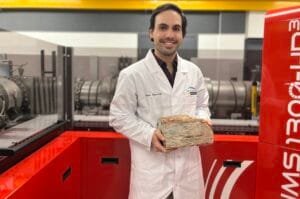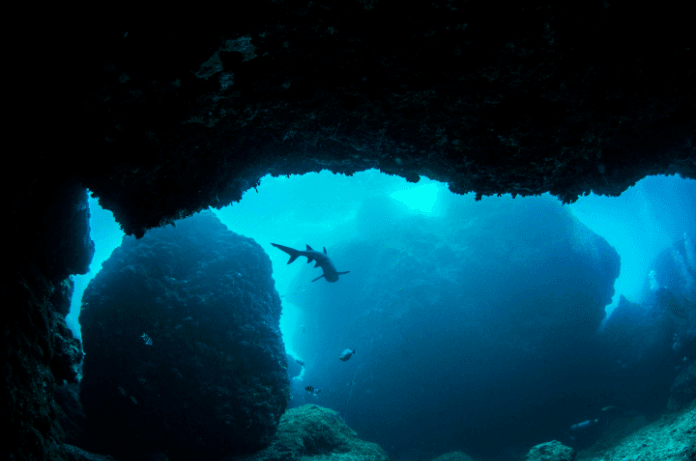Stretching an astonishing 5,000 kilometers across the Indian Ocean, along the 90-degree east longitude, lies the Ninetyeast Ridge, a submerged volcanic mountain range rivaling the length of North America’s Rocky Mountains. For years, this geological marvel has intrigued scientists, offering glimpses into Earth’s tectonic past. Now, thanks to groundbreaking research, new insights reveal its fascinating history, reshaping our understanding of how tectonic plates and mantle hotspots interact.
What makes this discovery even more exciting? It’s not just about discovering the mysteries of the past it has real implications for predicting and mitigating natural disasters such as earthquakes and volcanic eruptions. So, how did this underwater volcanic chain come to be, and what new secrets has it revealed? Let’s dive deep into the story.
A Moving Hotspot: Redefining the Volcanic Trail Theory
Traditionally, scientists believed that volcanic hotspots remained stationary in the Earth’s mantle, while tectonic plates drifted over them, leaving behind a trail of volcanoes. Imagine a stationary sewing machine needle piercing through a sliding piece of cloth, stitching a neat line of volcanic formations.
But the Ninetyeast Ridge tells a different story. Unlike most volcanic trails, the hotspot responsible for this ridge moved significantly by several hundred kilometers within the mantle. This behavior, while suspected in other parts of the world, has rarely been proven.

“This kind of hotspot movement is thought to be common but is hard to prove,” explains Dr. Hugo Olierook, a Geoscientist from Curtin University. “This study provides the first documented case of such movement in the Indian Ocean.”
The Formation of the Ninetyeast Ridge
According to the research, the Ninetyeast Ridge formed between 83 and 43 million years ago as a massive volcanic chain. Its oldest sections lie to the north, near India, while the younger formations are situated further south. High-precision dating techniques used on minerals extracted from the ridge revealed a fascinating timeline:
- 83–66 million years ago: The volcanic peaks were formed at roughly half the rate of seafloor spreading.
- 66 million years ago: The plume disconnected from the northward-migrating Indian-Antarctic spreading ridge.
- 42 million years ago: The hotspot finally drew a vertical underwater scar that divides the Indian Ocean into east and west.
Research findings, Published in Nature Communications, suggest that the Kerguelen hotspot, which created the ridge, was not fixed beneath the Indian Plate as initially believed. Instead, it moved and interacted dynamically with the tectonic plates.
The Role of the Kerguelen Mantle Plume
The Kerguelen mantle plume, responsible for the formation of the Ninetyeast Ridge, is a fascinating geological phenomenon. Plumes like these form when gathering heat melt parts of the mantle, releasing hot magma in pipe-like upwellings.
Initially, scientists assumed that the Indian Plate simply drifted over a stationary hotspot, creating the ridge. However, radioisotopic dating suggests otherwise. The Kerguelen plume appears to have been “captured” by the spreading ridge between 83 and 66 million years ago, with its materials flowing toward the ridge and erupting along its length.
This interaction created a volcanic chain unlike any other. “The most likely scenario is that the mantle plume was captured by the northward-migrating Indian-Antarctic spreading ridge,” explains Associate Professor Qiang Jiang, the study’s lead author from the China University of Petroleum.
Revising Earth’s Tectonic Models
The implications of this discovery extend far beyond the Indian Ocean. For years, rough age estimates of the Ninetyeast Ridge were used to construct models of how Earth’s tectonic plates moved and reconfigured. However, these models were based on incomplete data.
“With high-precision dating, we can refine these models significantly, leading to better insights into ancient continental movements,” says Professor Fred Jourdan from Curtin University.
This refined understanding not only revises the ridge’s estimated age and origin but also provides a clearer picture of Earth’s geological past. It helps scientists build more accurate models of how continents and oceans evolved over millions of years, paving the way for more precise predictions of natural disasters.
Seamounts, Hotspots, and the Science of Volcanoes
Seamounts underwater volcanoes found in every ocean are caused by hotspots beneath the Earth’s crust. Heat gathers in the mantle, melting rock and releasing magma through pipe-like upwellings.
Initially, scientists didn’t think hotspots could move, leading to the theory that seamount trails were simply the result of tectonic plates sliding over stationary hotspots. But the Ninetyeast Ridge challenges this assumption.
Dr. Olierook offers a vivid analogy: “Think of the hotspot as a fountain pen, with the moving ‘tip’ depositing liquid magma across the surface of the Earth.”
Implications for the Future
Understanding the Ninetyeast Ridge’s formation isn’t just about decoding Earth’s past it’s about preparing for the future. Studies like this are crucial for improving our knowledge of Earth’s internal processes, which play a key role in predicting earthquakes and volcanic eruptions.
“Currently, we are far from understanding how the Earth’s internal plumbing works,” says Associate Professor Jiang. “Studies like this one are a major step in the right direction.”
Advancing Earth Science Research
This groundbreaking discovery of Ninetyeast Ridge marks a turning point in the field of geology, proving that mantle hotspots can move and interact dynamically with tectonic plates. Yet, the work is far from over. To unlock the full potential of these findings, further research is essential:
- Support High-Precision Dating: Advanced techniques are needed to refine geological models further.
- Encourage Collaborative Studies: International teams like this one, with members from Australia, Sweden, China, and the US, demonstrate the power of global collaboration.

